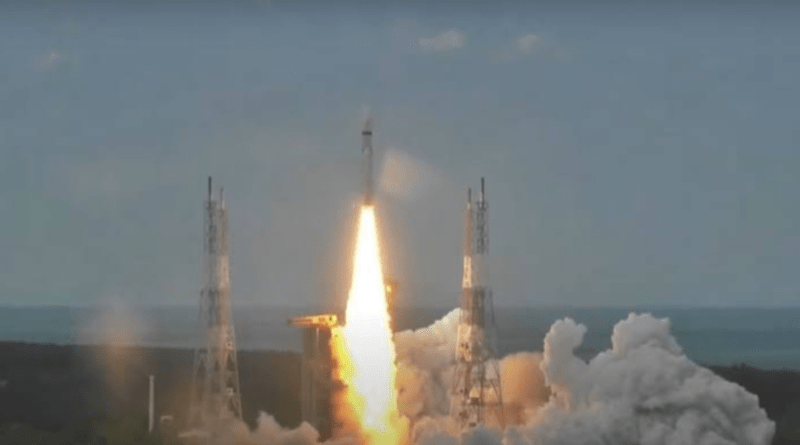New here : Chandrayaan-4 will now be launched in two stages, using PSLV and LVM-3.
Unlike its predecessor, this mission will not be launched in a single phase. Rather, vehicles that will return rocks and soil to India in addition to making a moon landing will be launched twice.
Following the historic success of the Chandrayaan-3 mission, the Indian Space Research Organization (Isro) is already preparing for the upcoming Chandrayaan-4 lunar expedition.
Unlike its predecessor, this mission would not be launched in a single phase. Rather, two independent launches will carry vehicles that will land on the Moon and bring back to India the lunar regolith, or rocks and soil from the lunar surface. The lander, rover, and propulsion module made up the three primary parts of the Chandrayaan-3 project. The two other parts of the Chandrayaan-4 mission will be responsible for returning the samples from the moon and dumping them on Earth.
Isro chief S. Somnath described the composition of the Chandrayaan-4 components as five spacecraft modules during a presentation at the National Space Science Symposium.
The following five modules will be available:
* Propulsion Module:
Chandrayaan-4’s propulsion module, like that of Chandrayaan-3, will steer the spacecraft into lunar orbit before disengaging.
* Descender Module:
This module, like the Vikram lander on Chandrayaan-3, will land on the moon.
* Ascender Module:
This module will eject from the lander and start its journey back to Earth when the samples have been gathered and stowed.
* Transfer Module:
Its job is to remove the ascender module from lunar orbit by capturing it. Before the capsule with the samples of rock and soil separates, it will return to Earth.
• Re-entry Module:
After returning from the Moon, this capsule containing lunar regolith will touch down on Earth. TWO DIVIDENTS PURPOSES The Chandrayaan-4 mission’s five components won’t launch simultaneously.
The Propulsion Module, Descender Module, and Ascender Module are the three components that India’s heaviest launch vehicle, LVM-3, will launch with, according to Isro Chief. The launch of this will resemble that of the Chandrayaan-3 mission in 2023. A Polar Satellite will carry the Transfer Module and the Re-entry Module during launch.
Nonetheless, this will be the first mission of its kind to use two launch vehicles to accomplish a single task.
Building on the achievements of the just-completed Chandrayaan-3 mission, Chandrayaan-4 seeks to fulfill more challenging goals. If Chandrayaan-4 is successful, India will become just the fourth country to return samples from the moon.




